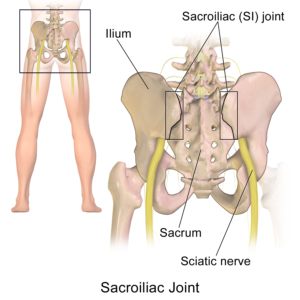What is Sacroilitis?
Sacroilitis is inflammation of the sacroiliac joint. This joint function to connect the pelvis to the lower back. Individual may often complain of pain in the lower back, sacroiliac joint or even pain that radiates down into the buttocks. Pain is made worse with extended standing and stair climbing. At times Pain in the SI joint region can be referred from the lower back due to a pinched nerve.
Thus, proper workup with history and physical exam is necessary to identify the exact cause of your pain to formulate the proper treatment plan. Workup may require diagnostic nerve blocks, imaging and/or electrodiagnostic studies (Nerve conduction studies and Electromyography)
Risk factors for sacroiliac joint pain: Obesity, family history of arthritis, overuse secondary to work or sports, age and injury.
Potential symptoms that you may experience with this condition:
- Sacroiliac joint pain
- Hip joint pain
- Pain that worsens with activity such as walking, running, stair climbing, long strides or prolonged standing
- Limited range of motion at the hip, pelvis and/or lower back
- Burning, numbness and tingling sensation occurring at the hip, groin or anterior thigh
- Muscle stiffness and spasms
- Clinking sound of SI joint
- Swelling of SI joint or surrounding tissue
Treatment options for this condition:
- Physical therapy and/or Occupational therapy
- Medications:
Anti-inflammatory therapy
Nerve pain medications: Neurontin, Lyrica, Amitriptyline, Nortriptyline
Muscle relaxants
Hot and Cold compressors - Cognitive behavioral therapy
- Interventions
SI joint or Hip joint injection with local anesthetic and steroid
Bursa injection with local anesthetic and steroid
Lumbar Epidural steroid injections
Lumbar Medial branch or facet joint blocks
Radiofrequency ablation of lumbar facet joints
Sacroiliac Joint block and/or radiofrequency ablation
Acupuncture
TENS unit therapy
- Surgery This is considered when less invasive therapy is not successful or when is considered to be the best option for the cause of your SI joint pain.

